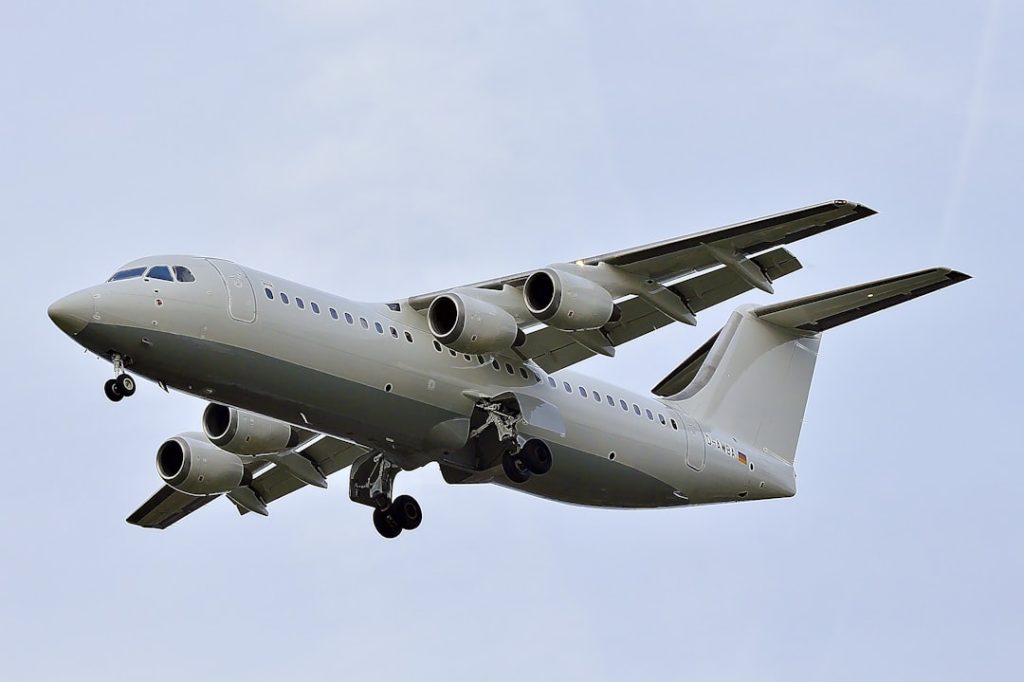The Airbus A321, a member of the A320 family, has established itself as a significant player in the commercial aviation sector since its introduction in the early 1990s. Designed to cater to the growing demand for medium-haul flights, the A321 offers airlines a versatile platform that balances capacity, range, and operational efficiency. With its ability to accommodate a larger number of passengers compared to its smaller siblings, the A318 and A319, the A321 has become a preferred choice for both low-cost carriers and full-service airlines alike.
Its popularity is underscored by the substantial number of units sold, making it one of the best-selling aircraft in history. The A321’s design philosophy revolves around maximizing passenger comfort while ensuring operational efficiency. It is equipped with advanced aerodynamics and cutting-edge materials that contribute to its performance.
The aircraft’s versatility allows it to operate on various routes, from short domestic flights to longer international journeys. As airlines continue to seek ways to optimize their fleets, the A321 stands out as a reliable and efficient option that meets the evolving needs of the aviation market.
Key Takeaways
- The Airbus A321 is a popular narrow-body aircraft known for its versatility and efficiency in short to medium-haul flights.
- With a length of 44.51 meters and a wingspan of 35.8 meters, the A321 is designed to accommodate up to 240 passengers in a single-class configuration.
- The cockpit of the A321 is equipped with advanced avionics systems, including fly-by-wire technology and digital displays for improved situational awareness.
- Passengers on the A321 can enjoy a spacious cabin with modern amenities, including in-flight entertainment systems and comfortable seating options.
- The A321 is known for its impressive performance and fuel efficiency, making it a popular choice for airlines looking to optimize their operating costs.
Design and Specifications of the A321
The Airbus A321 boasts a sleek and modern design that reflects its advanced engineering. With a length of approximately 44.51 meters (146 feet), it is the longest variant in the A320 family. The wingspan measures around 34.1 meters (111 feet), featuring wingtip devices known as sharklets that enhance aerodynamic efficiency.
These winglets not only improve fuel economy but also contribute to reduced noise levels during takeoff and landing, aligning with contemporary environmental standards. In terms of specifications, the A321 is available in several variants, including the A321neo (new engine option) and the A321XLR (extra long range). The A321neo incorporates more fuel-efficient engines, such as the Pratt & Whitney PW1100G or the CFM International LEAP-1A, which provide significant reductions in fuel consumption and emissions.
The aircraft can typically seat between 185 to 240 passengers, depending on the configuration chosen by the airline. The maximum range of the A321neo is approximately 4,000 nautical miles (7,400 kilometers), allowing it to connect distant city pairs with ease.
Cockpit and Avionics

The cockpit of the Airbus A321 is designed with a focus on ergonomics and advanced technology, providing pilots with an intuitive interface for managing flight operations. The flight deck features a glass cockpit layout, which includes large digital displays that present critical flight information in a clear and concise manner. This modern design reduces pilot workload and enhances situational awareness during all phases of flight.
Avionics systems on the A321 are state-of-the-art, incorporating fly-by-wire technology that allows for precise control of the aircraft. The fly-by-wire system replaces traditional mechanical controls with electronic signals, resulting in smoother handling and improved safety margins. Additionally, the A321 is equipped with advanced navigation systems, including Global Positioning System (GPS) capabilities and an Integrated Flight Management System (FMS), which optimizes flight paths for fuel efficiency and time savings.
These technological advancements not only enhance operational safety but also contribute to more efficient flight planning and execution.
Cabin Features and Passenger Comfort
| Feature | Description |
|---|---|
| Seat Pitch | The distance between one point on a seat to the same point on the seat in front or behind it |
| Seat Width | The width of the seat cushion |
| Reclining Seats | Seats that can be adjusted to a more comfortable position for resting |
| Entertainment System | Onboard system providing movies, music, and other media for passenger enjoyment |
| Overhead Storage | Storage compartments above passenger seats for carry-on luggage |
Passenger comfort is a hallmark of the Airbus A321’s design, with its cabin layout offering a spacious environment that enhances the flying experience. The aircraft typically features a two-class or all-economy configuration, allowing airlines to tailor their offerings based on market demand. The cabin width of approximately 3.7 meters (12 feet) provides ample space for wider seats and aisles, contributing to an overall sense of comfort.
Airbus has also prioritized noise reduction in the A321’s cabin design. The use of soundproofing materials and quieter engines results in a more serene environment for passengers during flight. Additionally, modern lighting systems equipped with LED technology create a pleasant ambiance throughout the cabin, enhancing passenger mood and comfort levels.
In-flight entertainment options are also abundant, with many airlines offering personal screens and connectivity features that allow passengers to stream content directly to their devices.
Performance and Efficiency
The performance metrics of the Airbus A321 are impressive, particularly when considering its operational efficiency. The aircraft’s advanced aerodynamics and lightweight materials contribute to reduced drag and improved fuel consumption rates. The A321neo variant, in particular, has been lauded for its ability to achieve up to 20% lower fuel burn compared to earlier models, making it an attractive option for airlines looking to minimize operating costs.
In addition to fuel efficiency, the A321’s performance extends to its takeoff and landing capabilities. The aircraft can operate from shorter runways than many of its competitors, allowing airlines to serve airports with limited infrastructure. This flexibility opens up new route opportunities and enhances connectivity for passengers traveling to less accessible destinations.
Furthermore, the aircraft’s climb rate is commendable, enabling it to reach cruising altitude quickly and efficiently.
Maintenance and Serviceability

Maintenance considerations are crucial for airlines operating the Airbus A321, as they directly impact operational costs and aircraft availability. The design of the A321 facilitates ease of maintenance through features such as accessible engine compartments and modular components that can be replaced quickly. This serviceability reduces downtime during routine checks and repairs, allowing airlines to maximize their fleet utilization.
Airbus has also implemented comprehensive maintenance programs that provide operators with detailed guidelines for upkeep and inspections. These programs are designed to ensure that aircraft remain in optimal condition throughout their operational life. Additionally, advancements in predictive maintenance technologies enable airlines to monitor aircraft systems in real-time, identifying potential issues before they escalate into costly repairs.
This proactive approach not only enhances safety but also contributes to overall fleet efficiency.
Safety and Emergency Systems
Safety is paramount in aviation, and the Airbus A321 is equipped with a robust suite of safety features designed to protect passengers and crew alike. The aircraft incorporates multiple redundant systems that ensure continued operation even in the event of a failure in one component. For instance, critical systems such as hydraulics and electrical power are designed with backups that activate automatically if needed.
Emergency systems on the A321 include advanced evacuation protocols that prioritize passenger safety during emergencies. The aircraft is equipped with multiple emergency exits strategically located throughout the cabin, ensuring rapid egress in case of an evacuation scenario. Additionally, slide rafts are deployed from these exits to facilitate safe evacuation over water or land.
Crew training programs emphasize emergency procedures, ensuring that flight attendants are well-prepared to manage any situation that may arise during flight.
Future Developments and Upgrades
As the aviation industry continues to evolve, so too does the Airbus A321. Future developments are focused on enhancing performance, sustainability, and passenger experience. One area of significant interest is the ongoing research into alternative fuels and hybrid-electric propulsion systems that could further reduce carbon emissions associated with air travel.
Airbus has been actively exploring these technologies as part of its commitment to achieving net-zero emissions by 2050. Moreover, upgrades to cabin technology are anticipated as airlines seek to improve passenger engagement during flights. Innovations such as enhanced connectivity options, improved in-flight entertainment systems, and personalized services are likely to become standard features on future A321 models.
As airlines adapt to changing consumer preferences and environmental regulations, the Airbus A321 will undoubtedly continue to play a pivotal role in shaping the future of commercial aviation while maintaining its reputation for reliability and efficiency.


